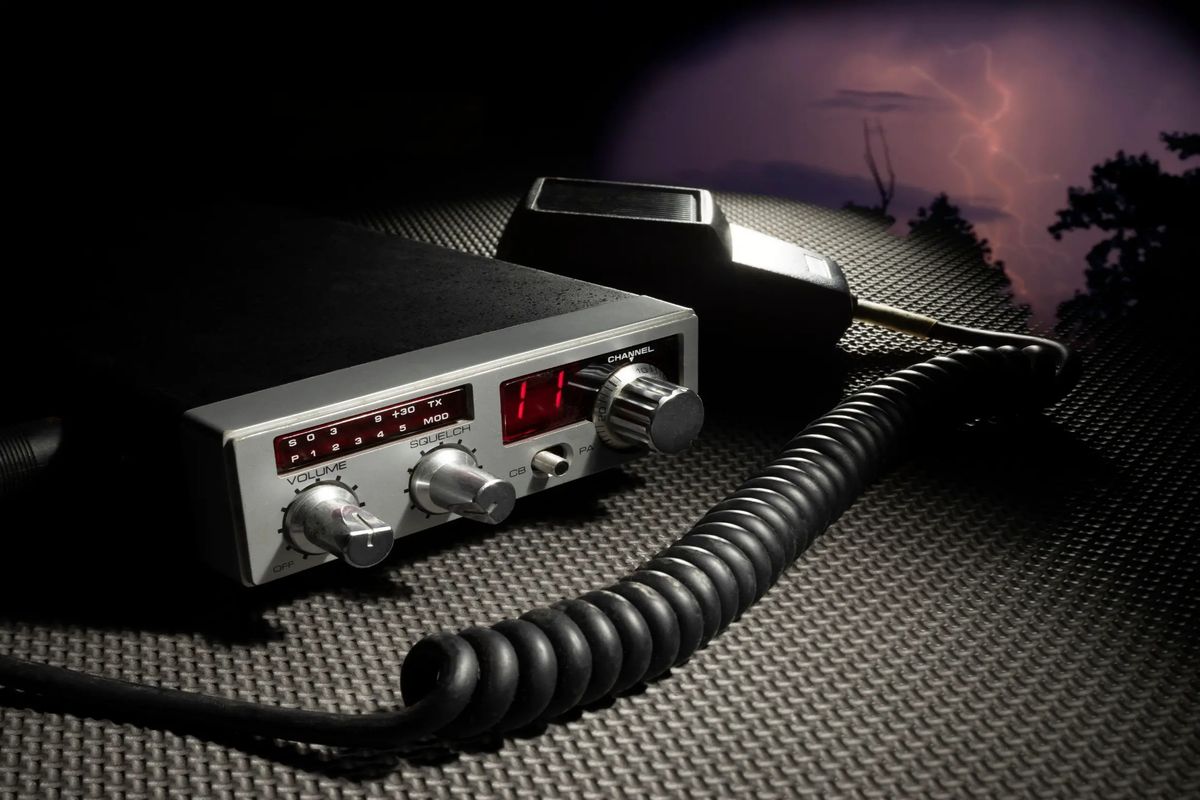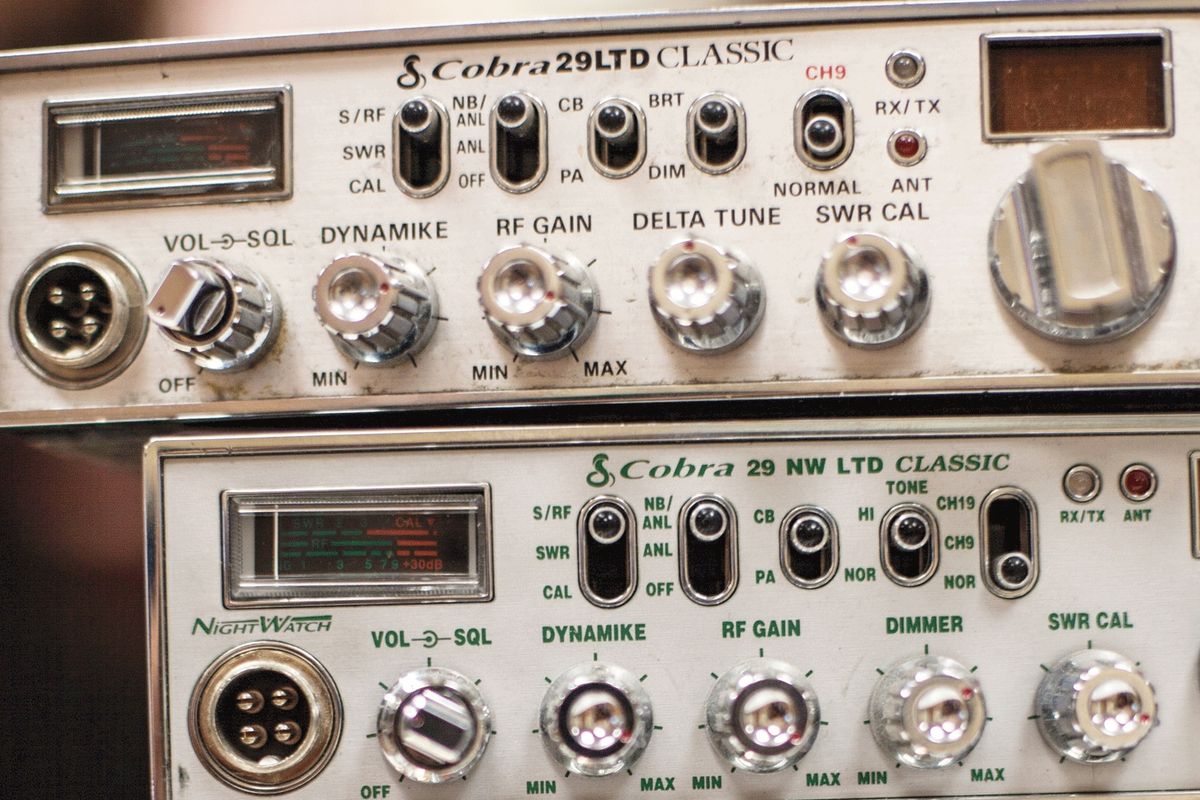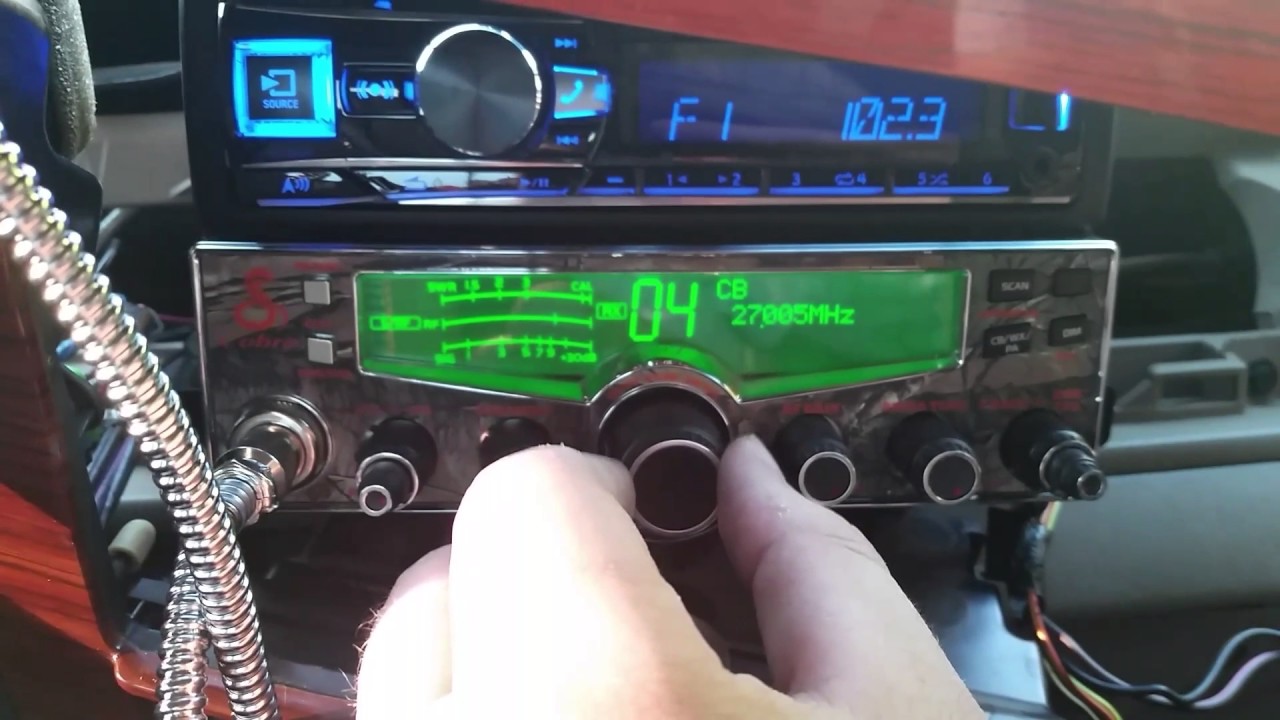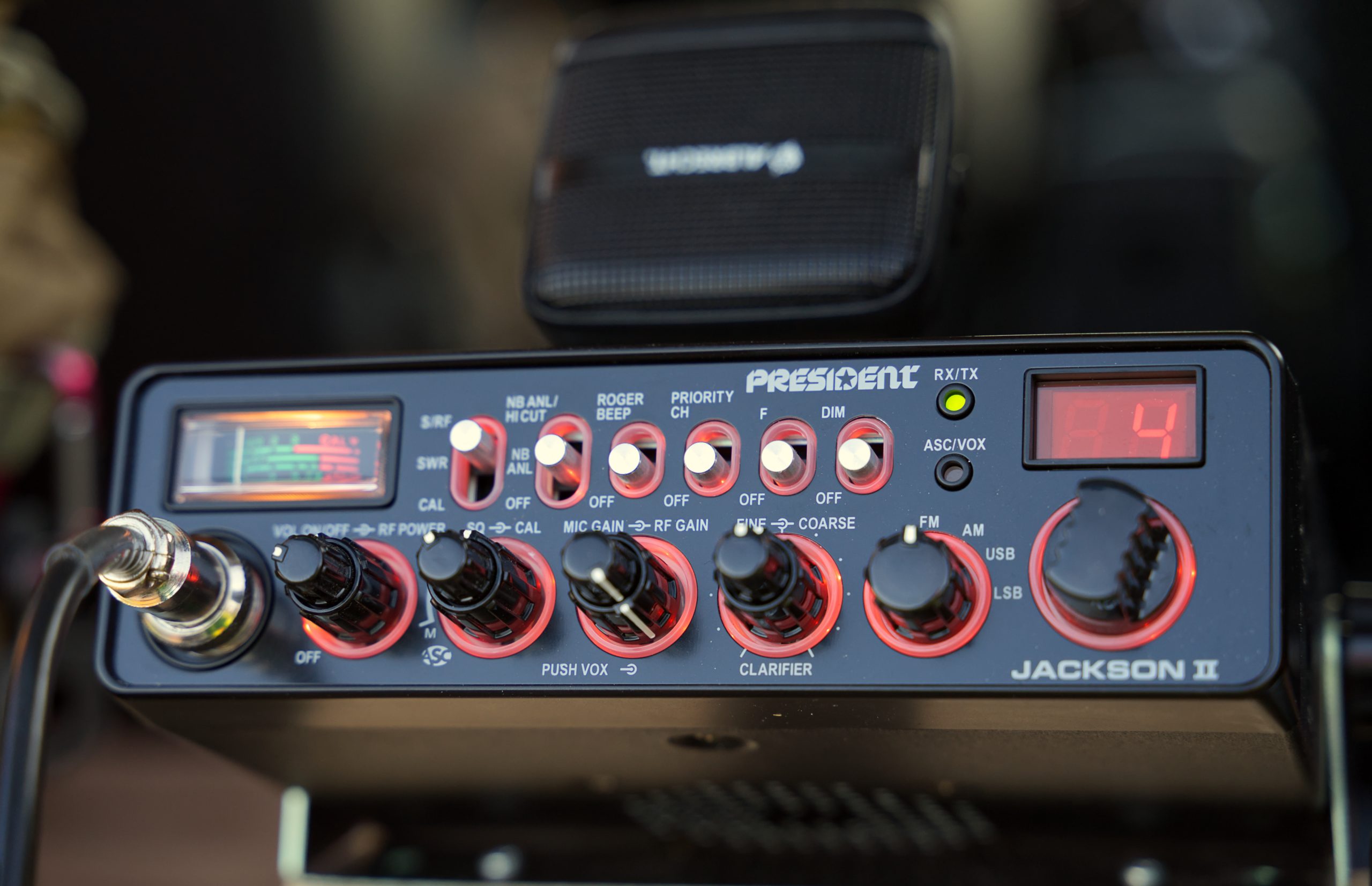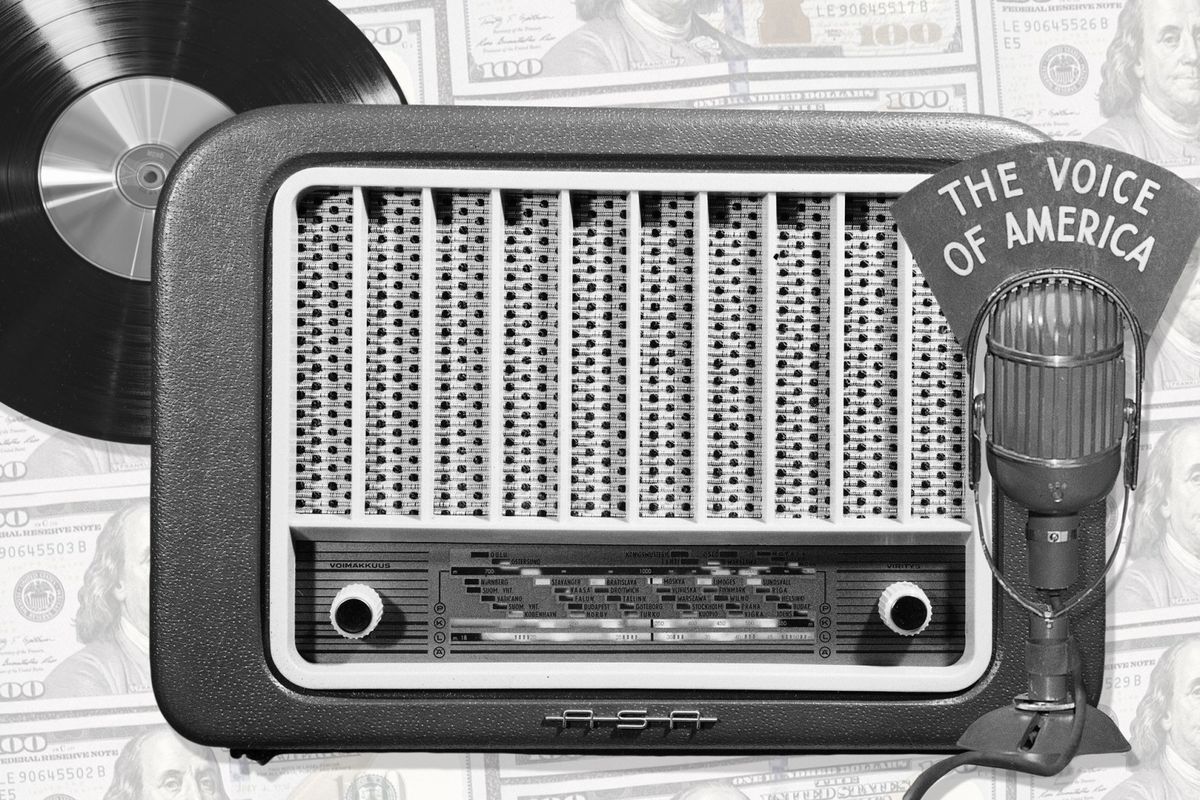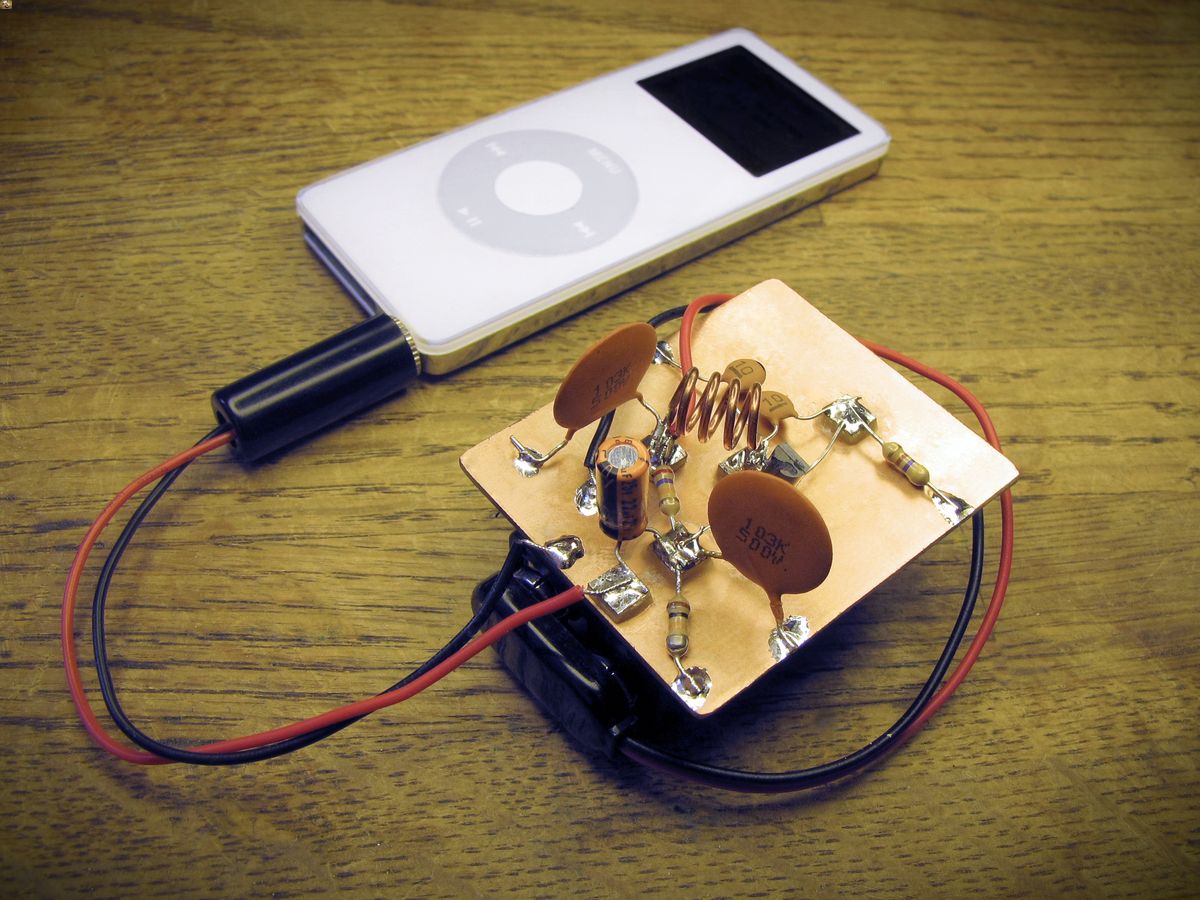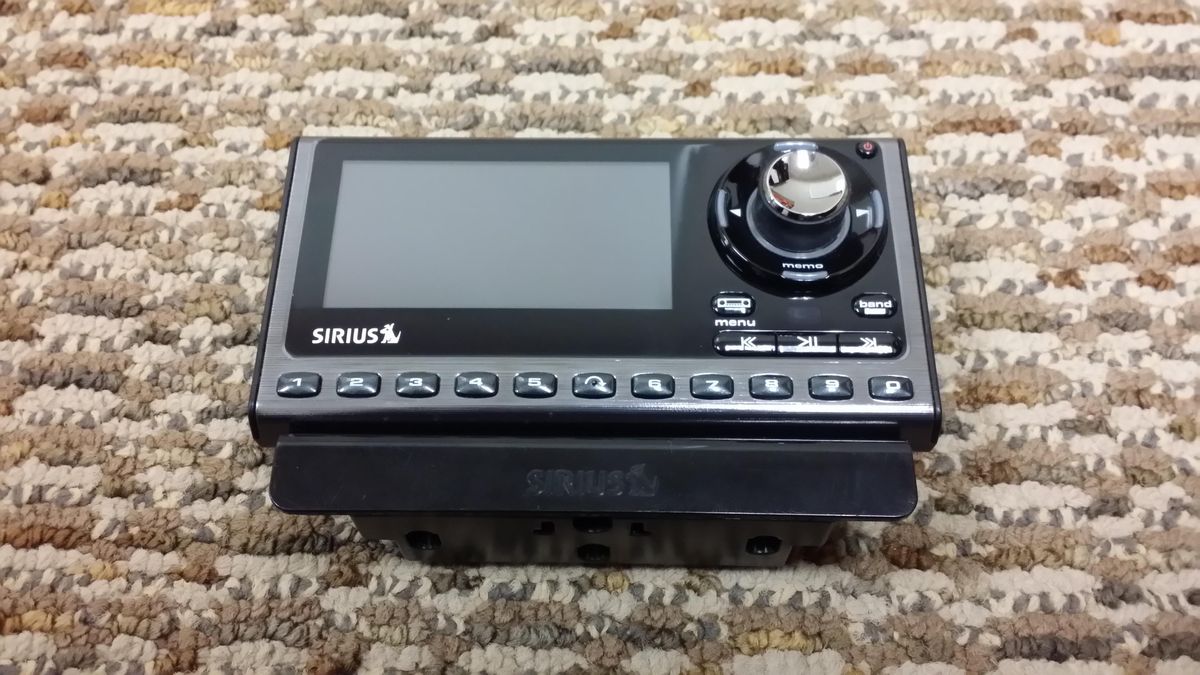Home>Devices & Equipment>Radio>How Far Does CB Radio Reach
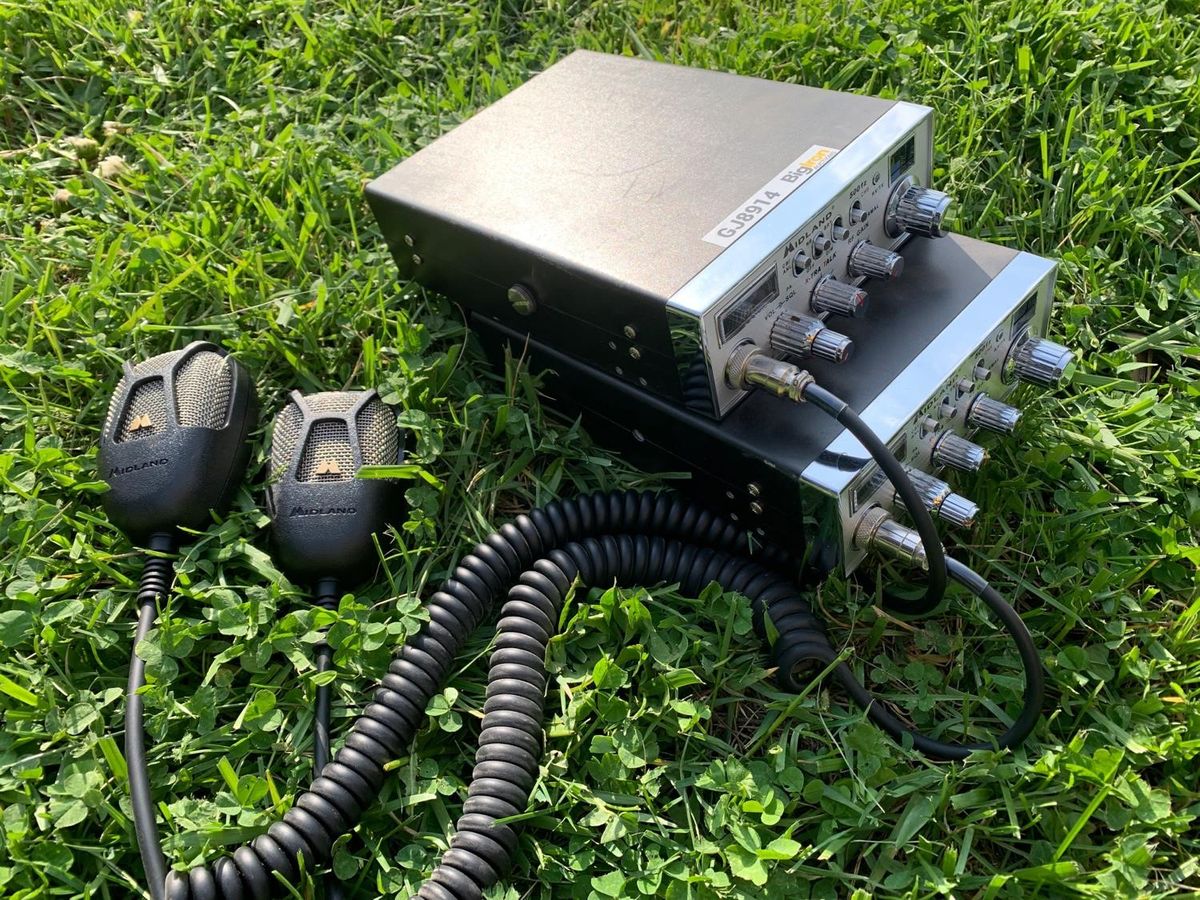

Radio
How Far Does CB Radio Reach
Modified: January 22, 2024
Discover the impressive reach of CB radio and explore how far it can transmit signals. Uncover the power and versatility of this essential communication tool.
(Many of the links in this article redirect to a specific reviewed product. Your purchase of these products through affiliate links helps to generate commission for AudioLover.com, at no extra cost. Learn more)
Table of Contents
- Introduction
- Understanding CB Radio
- Factors Affecting CB Radio Range
- The Role of Antennas in CB Radio Range
- Improving CB Radio Range with Proper Installation
- Environmental Factors Impacting CB Radio Range
- Interference and CB Radio Range
- Legal Considerations of CB Radio Range
- Maximizing CB Radio Range: Tips and Tricks
- Conclusion
Introduction
CB radio, short for Citizens Band radio, has been a popular form of communication for decades. It allows users to connect with others within a certain range using specific channels designated for general public use. Whether you’re a truck driver looking for real-time traffic updates or an outdoor enthusiast seeking a way to stay connected with fellow adventurers, CB radio can be a valuable tool.
One of the common questions that come up when discussing CB radio is how far it can reach. Understanding the range of a CB radio is crucial for determining its effectiveness in different scenarios. Factors such as terrain, antennas, installation, and environmental conditions can all impact the range of a CB radio.
By delving into these various aspects, we can gain a comprehensive understanding of CB radio range and explore ways to optimize its performance.
In this article, we will discuss the factors that affect CB radio range, the role of antennas in extending range, the impact of environmental conditions, and tips for maximizing the effectiveness of your CB radio.
So, if you’re curious about how far your CB radio can reach or want to learn how to improve its range, continue reading to unlock the secrets of maximizing your CB radio’s potential.
Understanding CB Radio
Citizens Band (CB) radio is a system of short-distance communication that operates on a set of 40 channels. It became popular in the 1970s as a means for individuals to communicate with each other over short distances without requiring a license.
CB radio is commonly used by truckers, outdoor enthusiasts, and hobbyists who want to stay connected with others while on the road or in remote areas. It provides a reliable and easy-to-use communication method, allowing users to exchange messages, updates, and emergency information.
The range of a CB radio can vary depending on several factors, which we will explore in this article. Understanding these factors can help you gauge the limitations and capabilities of your CB radio.
One important aspect of CB radio is its power output. CB radios typically have a power output of four watts, which means they can transmit signals over relatively short distances. While four watts may not sound like much compared to other communication devices, CB radios make up for their limited power with other factors that influence their range.
Another crucial element of CB radio is the use of specific channels for communication. The 40 CB channels are divided into different categories, including emergency channels, general chat channels, and trucker-specific channels. Each channel has its own purpose and range of use, providing users with various options for communication.
CB radios are designed to operate on the 27 MHz frequency band, also known as the 11-meter band. This frequency range allows for reliable communication over short distances, making it suitable for everyday use.
It’s important to note that CB radio is not a long-range communication system like amateur radio or satellite communication. Its intended purpose is for short-distance communication within a range of a few miles to several miles, depending on the conditions.
Now that we have a basic understanding of CB radio, let’s explore the factors that affect its range and how we can optimize its performance.
Factors Affecting CB Radio Range
Several factors can affect the range of a CB radio, influencing how far its signals can reach. Understanding these factors can help you gauge the limitations of your CB radio and take steps to optimize its performance.
1. Power Output
The power output of a CB radio plays a significant role in determining its range. CB radios typically have a power output of four watts, which allows for communication over relatively short distances. Increasing the power output can extend the range, but it is important to check local regulations and ensure compliance with legal limits.
2. Antenna Quality and Placement
The quality of the antenna and its placement greatly affect the range of a CB radio. A high-quality antenna designed specifically for CB radios can improve signal transmission and reception. Additionally, the height and location of the antenna can impact its range, as a higher antenna has a better line of sight and can overcome obstacles more easily.
3. Environmental Conditions
The environment in which you are using your CB radio can impact its range. Factors such as mountains, tall buildings, and dense forests can obstruct the radio waves, reducing the range. On the other hand, open areas with clear line of sight can allow signals to travel further.
4. Atmospheric Conditions
Atmospheric conditions such as weather and solar activity can also influence the range of a CB radio. During times of high solar activity or unusual atmospheric conditions, signals can travel further, resulting in an extended range. Conversely, severe weather like storms can disrupt signals and reduce the range.
5. Interference
Interference from other electronic devices, power lines, or nearby CB radios can affect the range and clarity of your CB radio transmission. It’s important to choose a clear channel and minimize interference to maximize the range.
6. CB Radio Equipment Quality
The quality of the CB radio equipment itself, including the transmitter, receiver, and internal components, can impact its range. Choosing a reputable brand and investing in high-quality equipment can improve the range and overall performance of your CB radio.
Understanding these factors will help you assess the range limitations of your CB radio and take necessary steps to optimize its performance. In the next section, we will explore the role of antennas in extending CB radio range.
The Role of Antennas in CB Radio Range
When it comes to maximizing the range of your CB radio, the antenna plays a crucial role. The quality and design of the antenna can greatly impact the transmission and reception of signals, ultimately affecting the range of your CB radio.
1. Antenna Length and Design
CB radio antennas come in various lengths, typically ranging from 2 to 9 feet. The length of the antenna is directly proportional to its effectiveness in transmitting and receiving signals. Longer antennas have a greater surface area for capturing signals, resulting in improved range.
The design of the antenna, such as a whip or a fiberglass antenna, can also influence its performance. Fiberglass antennas are known for their durability and flexibility, while whip antennas are more suitable for rugged environments.
2. Antenna Placement and Height
The placement and height of the antenna also play a significant role in the range of your CB radio. Ideally, the antenna should be mounted as high as possible to maximize its line of sight and reduce obstructions. A high-mounted antenna has a better chance of transmitting and receiving signals over longer distances.
If you’re using a mobile CB radio setup, consider mounting the antenna on the roof of your vehicle for optimal performance. Avoid mounting it near any metallic objects or sources of interference as they can negatively impact the range.
3. Grounding and Radial Systems
Proper grounding of the antenna is essential for optimal performance and to reduce signal loss. A properly grounded antenna helps dissipate static charge and improves signal transmission. Additionally, using a radial system, which consists of a network of wires or rods laid out around the base of the antenna, can further enhance signal efficiency and range.
4. Using Antenna Tuning and SWR
An antenna tuner or SWR (Standing Wave Ratio) meter can be used to fine-tune the antenna for optimal performance. These tools help match the impedance of the antenna with that of the CB radio, improving signal transmission and minimizing signal loss. A properly tuned antenna can significantly extend the range of your CB radio.
5. Consider Omni or Directional Antennas
Depending on your specific needs, you may choose between omnidirectional and directional antennas. Omnidirectional antennas transmit and receive signals in all directions, making them suitable for general communication. On the other hand, directional antennas focus their range in a particular direction, providing better range and signal strength in that specific area.
By understanding the role of antennas and implementing the right antenna setup, you can greatly enhance the range and performance of your CB radio. In the next section, we will discuss the importance of proper installation in maximizing CB radio range.
Improving CB Radio Range with Proper Installation
Proper installation of your CB radio equipment is crucial for maximizing its range and performance. A well-installed CB radio setup can minimize signal loss, reduce interference, and optimize the transmission and reception of signals. Here are some key tips to consider when installing your CB radio:
1. Choose the Right Location
When selecting a location for your CB radio, keep in mind that it should be easily accessible and free from obstructions. Choose a spot that allows for proper ventilation to prevent overheating. Also, ensure that the mounting location is secure and stable to avoid vibrations that can disrupt the radio’s performance.
2. Properly Mount the CB Radio
Mounting your CB radio securely is important to prevent damage and ensure stable operation. Use high-quality brackets and hardware designed for your specific CB radio model. Follow the manufacturer’s instructions for mounting, ensuring proper grounding and secure connections.
3. Install a High-Quality Antenna
As discussed earlier, the choice and installation of an antenna play a significant role in improving CB radio range. Make sure to select a high-quality antenna that is compatible with your CB radio. Follow the manufacturer’s guidelines for installation and consider adding a grounding system to minimize signal loss.
4. Properly Connect the Coaxial Cable
The coaxial cable connects the antenna to the CB radio and carries the radio signals. Use high-quality coaxial cable with proper shielding to prevent signal loss and interference. Ensure that the cable is properly connected, with the connectors securely fastened and protected from weather elements.
5. Reduce Interference
Interference can greatly affect the range and clarity of your CB radio. Take steps to minimize interference by keeping the antenna away from other electronic devices, power cables, and sources of electromagnetic interference. Consider using ferrite cores or filters to suppress unwanted noise and improve signal quality.
6. Test and Tune the CB Radio
Once the installation is complete, use an SWR meter to adjust and tune the CB radio for optimal performance. Adjusting the SWR (Standing Wave Ratio) helps match the impedance of the antenna to the radio, ensuring efficient signal transmission. This can significantly improve the range and overall performance of your CB radio.
By following these installation tips, you can improve the range and effectiveness of your CB radio. However, it is important to remember that optimal range also depends on other factors such as terrain and environmental conditions. In the next section, we will explore the impact of environmental factors on CB radio range.
Environmental Factors Impacting CB Radio Range
When using a CB radio, several environmental factors can affect its range and overall performance. These factors can either enhance or hinder the transmission and reception of signals. Understanding these environmental factors will help you anticipate the limitations and optimize the range of your CB radio.
1. Terrain
The terrain plays a significant role in determining the range of your CB radio. Mountains, hills, and tall buildings can obstruct the radio waves and reduce range. In contrast, open areas and flat terrain provide better line of sight and allow signals to travel further. When planning your communication, consider the geographical features of the area to gauge the potential range.
2. Vegetation and Foliage
Dense vegetation and foliage, such as forests or thick canopies, can absorb and scatter radio signals. This can cause a reduction in the signal strength and limit the effective range of your CB radio. When operating in areas with heavy vegetation, be aware of potential signal loss and adjust your expectations accordingly.
3. Buildings and Structures
Tall buildings, multi-story structures, and other man-made obstacles can block or reflect radio signals, leading to reduced CB radio range. The presence of these structures can create signal shadows and pockets of weak or no reception. Consider the impact of nearby buildings when estimating the range of your CB radio.
4. Water Bodies
Bodies of water, such as lakes, rivers, or oceans, can affect the range of your CB radio. Water is known for absorbing radio signals, especially at higher frequencies. When communicating near water bodies, keep in mind that the range may be slightly reduced compared to areas without water interference.
5. Weather Conditions
Weather conditions can have a notable impact on the range of your CB radio. Atmospheric conditions like rain, snow, or fog can attenuate radio signals, limiting their range. Severe storms and thunderstorms can introduce additional interference and disrupt the clarity and strength of the communication. Be aware of the current weather conditions and how they might affect your CB radio range.
It’s important to remember that these environmental factors are not within your control. However, being aware of their potential impact can help you better understand the limitations and adjust your expectations accordingly. Additionally, considering these factors can also guide you in selecting the right communication strategy and alternatives when needed.
In the next section, we will explore the issue of interference and its impact on the range of your CB radio.
Interference and CB Radio Range
Interference is a common challenge that can affect the range and clarity of your CB radio communication. Interference occurs when other electronic devices or radio transmissions disrupt the signals being transmitted or received by your CB radio. Understanding the different types of interference and how to mitigate them is essential for optimizing your CB radio range.
1. Electrical Interference
Electrical interference can arise from nearby power lines, electrical equipment, or even the electrical system of your own vehicle. These sources can generate electromagnetic fields that can interfere with the signals of your CB radio. To minimize electrical interference, try to keep your CB radio and antenna away from these potential sources. Additionally, using filters or ferrite cores on the power and audio cables can help reduce electromagnetic interference.
2. Atmospheric Interference
Atmospheric interference can occur due to factors such as solar flares and extreme weather conditions. During times of increased solar activity, atmospheric disturbances can enhance CB radio signals, resulting in longer range communication. However, severe weather conditions like thunderstorms can disrupt signals and reduce the range significantly. Be aware of these atmospheric variations to better gauge the potential range of your CB radio.
3. Co-channel Interference
Co-channel interference happens when two or more CB radios are using the same channel simultaneously. This can cause overlapping signals and make it difficult to effectively communicate. To avoid co-channel interference, select an available channel that is not already in use by others in your vicinity. Utilizing the channel with the least interference will help maximize your CB radio range.
4. Adjacent Channel Interference
Adjacent channel interference occurs when CB radios broadcasting on nearby channels have overlapping signals. This interference can result in a reduced range and poor clarity. To avoid adjacent channel interference, choose channels with significant frequency separation from other active channels in your area. This will minimize the chances of signal overlap and maximize your CB radio range.
5. External Interference
External interference can come from a variety of sources, such as nearby electronic devices, power lines, or other radio frequency transmissions. These sources can introduce unwanted signals that interfere with your CB radio signals, causing reduced range and clarity. Choosing a clear channel and maintaining distance from potential sources of interference can help minimize the impact of external interference.
By understanding the different types of interference and taking appropriate measures to mitigate them, you can optimize the range and performance of your CB radio. In the next section, we will discuss the legal considerations related to CB radio range and usage.
Legal Considerations of CB Radio Range
When using a CB radio, it’s important to be aware of the legal considerations regarding its range and usage. Different countries have specific regulations governing the power output, antenna length, and channel usage for CB radios. It’s essential to follow these regulations to ensure compliance and responsible use of your CB radio. Here are some key legal considerations to keep in mind:
1. Power Output Limitations
Most countries have restrictions on the power output of CB radios. In the United States, for example, the maximum power output allowed for CB radios is four watts. Exceeding this limit can result in legal repercussions. Make sure to check the specific regulations in your country to ensure you are operating within the legal power limits.
2. Antenna Length Regulations
Certain countries may have regulations regarding the maximum length of CB radio antennas. For example, in the United States, the maximum length permitted for a CB radio antenna is 102 inches. It’s important to adhere to these regulations to ensure compliance and avoid any potential legal issues.
3. Channel Usage Etiquette
CB radios operate on a set of specific channels designated for public use. It’s important to be mindful of proper channel usage etiquette and avoid transmitting on channels designated for emergency services or other specialized uses. Additionally, avoid excessive or unnecessary transmission, as it can clog up the channels and hinder communication for others.
4. Respect Privacy and Confidentiality
CB radio is a public communication platform, but it’s essential to respect the privacy and confidentiality of others. Avoid sharing personal or sensitive information over the airwaves, as it can be intercepted by others. Practice good radio etiquette and be mindful of the information you share to ensure a respectful and responsible use of CB radio.
5. Emergency and Distress Calls
In the event of an emergency or distress situation, CB radio can be a valuable communication tool. If you encounter an emergency situation, it’s important to prioritize emergency calls and provide accurate and concise information to the appropriate authorities. Familiarize yourself with the emergency channels designated for your region to effectively handle emergency situations.
By adhering to the legal regulations, practicing good radio etiquette, and respecting the privacy of others, you can use your CB radio responsibly and enjoy its benefits without any legal complications. In the next section, we will discuss tips and tricks to maximize the range of your CB radio.
Maximizing CB Radio Range: Tips and Tricks
If you want to maximize the range and performance of your CB radio, there are several tips and tricks you can implement. These techniques will help improve signal transmission and reception, optimize antenna performance, and enhance overall communication. Here are some useful tips to consider:
1. Use a High-Quality Antenna
Investing in a high-quality CB radio antenna can significantly improve your radio’s range. Choose an antenna that matches your specific needs and consider factors such as length, design, and build quality. A longer antenna with a proper grounding system will generally provide better performance and range.
2. Mount the Antenna at a High Location
Mounting your CB radio antenna at a high location, such as the roof of your vehicle or on a tall mast, will help maximize range. Elevated placement allows for better line of sight and reduces obstructions that may hinder signal transmission. Ensure that the antenna is securely mounted and properly grounded for optimal performance.
3. Utilize an External Amplifier
If permitted by your country’s regulations, using an external amplifier can boost the power output of your CB radio and extend its range. However, it is essential to ensure compliance with legal limits and not to exceed the authorized power output specified by regulations.
4. Optimize SWR (Standing Wave Ratio)
Tuning your CB radio’s SWR is crucial for efficient antenna performance and maximum range. Ensure that the SWR reading is within an acceptable range, typically below 1.5. Use an SWR meter to adjust the antenna’s length or a tuner to optimize the signal match between the antenna and the radio’s transmitted output.
5. Choose Open Channels
Selecting open channels with minimal interference from other CB radios will help maximize your range. Some channels may be more active and congested than others, leading to reduced clarity and limited range. Monitor different channels to find less crowded ones and improve your communication experience.
6. Reduce Nearby Interference
Avoid placing other electronic devices or antennas in close proximity to your CB radio, as they can cause interference. Keep in mind that power lines, radios, and other electronic equipment emit electromagnetic interference that can disrupt CB radio signals. Minimizing nearby interference sources will enhance your CB radio’s range.
7. Consider External Speaker Options
Using an external speaker can improve audio quality and clarity, allowing you to hear signals more clearly. Poor audio can affect your ability to understand messages and reduce overall communication effectiveness. Consider investing in a good-quality external speaker for better range and improved communication experience.
Implementing these tips and tricks will help you maximize the range and optimize the performance of your CB radio. However, it’s important to keep in mind that while these techniques can enhance your CB radio’s capabilities, they still depend on external factors such as terrain, weather, and signal interference. With proper implementation and awareness of these factors, you can enjoy extended range and improved communication with your CB radio.
Conclusion
CB radio can be a valuable tool for communication, whether you’re a truck driver on the road or an outdoor enthusiast exploring remote areas. Understanding the factors that affect CB radio range and implementing strategies to optimize its performance is essential for maximizing its potential.
Throughout this article, we have explored various aspects related to CB radio range. Factors such as power output, antenna quality and placement, environmental conditions, interference, and legal considerations all play a role in determining the range of your CB radio.
By following proper installation techniques, using high-quality antennas, and considering external factors like terrain, weather, and interference, you can improve the range of your CB radio. Additionally, adhering to the legal regulations and practicing responsible radio etiquette enhances the overall experience of CB radio communication.
While it’s important to utilize tips and tricks to maximize CB radio range, it’s equally important to acknowledge that limitations exist due to environmental conditions and legal restrictions. Understanding these limitations will help you make informed decisions and set realistic expectations for your CB radio’s range.
Remember, CB radio is primarily designed for short-distance communication, operating within a range of a few miles to several miles. It is not intended for long-range communication like amateur radio or satellite systems.
By implementing the strategies and tips discussed in this article, you can optimize the performance of your CB radio and enjoy reliable communication within its range limitations. Whether you’re on a road trip, exploring the great outdoors, or simply staying connected with fellow CB radio enthusiasts, maximizing your CB radio range will ensure clear and effective communication.
So, go ahead and fine-tune your CB radio setup, explore open channels, and venture confidently into the world of CB radio communication to make the most of your CB radio range.



